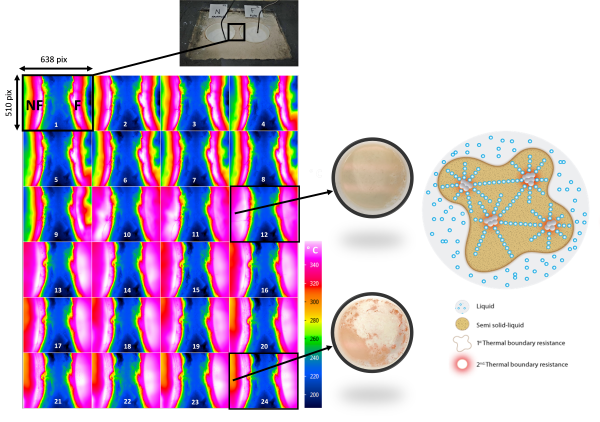Advances for the application of nanofluids to energy storage systems

Energy storage systems are key technologies for achieving the transition to renewable energies, which can become more viable if the energy efficiency of the former improves. At present, more than 70% of concentrated solar power systems have integrated thermal energy storage (TES). Such power plants reached an installed capacity of 4.5 GW at the end of 2019. In order to improve the energy efficiency of these systems, research and innovation are essential in the materials field.
In this context, nanofluids have generated many expectations, since this type of new fluids presents abnormal increase in heat capacity that can be 30% higher than the base fluid value with the incorporation of low nanoparticles concentration. This improvement in the properties enables an increase of the energy density system.

Energy storage systems are key technologies for achieving the transition to renewable energies, which can become more viable if the energy efficiency of the former improves. At present, more than 70% of concentrated solar power systems have integrated thermal energy storage (TES). Such power plants reached an installed capacity of 4.5 GW at the end of 2019. In order to improve the energy efficiency of these systems, research and innovation are essential in the materials field.
In this context, nanofluids have generated many expectations, since this type of new fluids presents abnormal increase in heat capacity that can be 30% higher than the base fluid value with the incorporation of low nanoparticles concentration. This improvement in the properties enables an increase of the energy density system.
In a recent paper published at Scientific Reports a team from the Design and Optimization Process and Materials Center (DIOPMA) and the Institute of Theoretical and Computational Chemistry of the UB (IQTCUB), has demonstrated experimentally for the first time, the main phenomena involved in the abnormal increase in heat capacity in nanofluids. In addition to the way we understand these materials, the results of the study represent a step forward towards their application.
Nanofluids are a promising option for a wide variety of technologies, including thermal storage systems. “The use of nanofluids could increase the concentrated solar power plantʼs efficiency as well as reducing the costs associated to the thermal storage process” says Professor Inés Fernández, from de Department of Materials Science and Physical Chemistry.
Despite the great potential of nanofluids, we are still far away from understanding fundamental questions concerning them, such as their stability. Moreover, the discrepancies observed in experimental and simulated values of thermo-physical properties do not help. Therefore, it is necessary to create a theoretical framework that helps us optimize nanofluids and exploit its potential. “This work, therefore, provides an explanation of the anomalous increase of heat capacity in sodium nitrate nanofluids, taking a step forward in the science of nanofluids and their industrial applications.” points out Adela Svobodova, the first author of the study.
To find information on the mechanism behind the increase in heat capacity, the research team used different characterization methods like infrared thermography, infrared spectroscopy and differential scanning calorimetry (DSC). Using infrared thermography, UB researchers established that there are nanofluid regions that exhibit high temperature gradients. These gradients stem from the formation of liquid-solid interfaces originated between the nanoparticle surfaces and the fluid medium, due to the formation of a surface layer at higher temperatures. The formation of solid-liquid interfaces directly influences the increase in the heat capacity of the system, allowing the storage of more thermal energy.
Article reference
A. Svobodova Sedlackova, A. Calderón, C. Barreneche, P. Gamallo i A. I. Fernández. "Understanding the abnormal thermal behavior of nanofluids through infrared thermography and thermo physical characterization". Scientific Reports, vol. 11, 2021. DOI: 10.1038/s41598-021-84292-9
